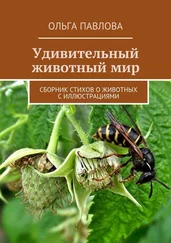Passerina cyanea.
Emlen, S. T. (1967). ‘Migratory orientation in the indigo bunting, passerina cyanea. Pt I: Evidence for use of celestial cues’, The Auk, 84 (3). P. 309–342. И: Emlen, S. T. (1967). ‘Migratory orientation in the Indigo Bunting, Passerina cyanea. Pt II: Mechanism of celestial orientation’, The Auk, 84 (4). P. 463–489.
Emlen, S. T. (1975). ‘The stellar-orientation system of a migratory bird’, Scientific American, 233 (2). P. 102–111.
Mouritsen, H., & Larsen, O. N. (2001). ‘Migrating songbirds tested in computer-controlled Emlen funnels use stellar cues for a time-independent compass’, Journal of Experimental Biology, 204 (22). P. 3855–3865.
Puffinus puffinus.
Strycker, N. K., The Thing with Feathers: The Surprising Lives of Birds and What They Reveal about Being Human (Riverhead Books, 2014).
Ig Nobel Prize. Уоррент и Дакке получили ее в 2013 г.
С 1967 по 1982 г. в Австралии успешно интродуцировали 29 видов навозных жуков (из них 22 вида — из Африки).
Этим занимаются далеко не все навозные жуки. Многие виды закапывают навоз там же, где его находят. Другие просто живут в навозе.
Baird, E., Byrne, M. J., Smolka, J., Warrant, E. J., & Dacke, M. (2012). ‘The dung beetle dance: an orientation behaviour?’, PLoS One, 7 (1), e30211.
Dacke, M., Nilsson, D. E., Scholtz, C. H., Byrne, M., & Warrant, E. J. (2003). ‘Animal behaviour: insect orientation to polarized moonlight’, Nature, 424 (6944). P. 33.
Dacke, M., Baird, E., Byrne, M., Scholtz, C. H., & Warrant, E. J. (2013). ‘Dung beetles use the Milky Way for orientation’, Current Biology, 23 (4). P. 298–300.
Ночная бабочка Noctua pronuba.
Sotthibandhu, S., & Baker, R. R. (1979). ‘Celestial orientation by the large yellow underwing moth, Noctua pronuba L.’, Animal Behaviour, 27. P. 786–800.
Talitrus saltator.
Ugolini, A., Hoelters, L. S., Ciofini, A., Pasquali, V., & Wilcockson, D. C. (2016). ‘Evidence for discrete solar and lunar orientation mechanisms in the beach amphipod, Talitrus saltator Montagu (Crustacea, Amphipoda)’, Scientific Reports, 6.
Phoca vitulina.
Mauck, B., Gläser, N., Schlosser, W., & Dehnhardt, G. (2008). ‘Harbour seals (Phoca vitulina) can steer by the stars’, Animal Cognition, 11 (4). P. 715–718.
Недавний обзор навигации по звездам у животных см.: Foster, J. J., Smolka, J., Nilsson, D. E., & Dacke, M. (2018, January). ‘How animals follow the stars’, in Proc. R. Soc. B., vol. 285, no. 1871. P. 20172322, The Royal Society.
Здесь и далее цит. по изд.: Фабр Ж. А. Инстинкт и нравы насекомых: Из «Энтомологических воспоминаний» Фабра / Пер. с фр. Е. И. Шевыревой; под ред. ученого секретаря Русского энтомологического общества Ив. Шевырева. В 2 т. М.: Терра, 1993. Т. 2. С. 443, 444.
Saturnia pyri — размах крыльев этой бабочки достигает 20 см. [Другие русские названия — павлиноглазка грушевая и сатурния грушевая. — Прим. перев.]
Fabre, J- H., Souvenirs Entomologique, série VII, ch. 23.
Farkas, S. R., & Shorey, H. H. (1972). ‘Chemical trail-following by flying insects: a mechanism for orientation to a distant odor source’, Science, 178 (4056). P. 67–68.
Kennedy, J. S., Ludlow, A. R., & Sanders, C. J. (1980). ‘Guidance system used in moth sex attraction’, Nature, 288 (5790). P. 475–477.
Martin, H. (1965). ‘Osmotropotaxis in the honey-bee’, Nature, 208 (5005). P. 59–63.
Borst, A., & Heisenberg, M. (1982). ‘Osmotropotaxis in Drosophila melanogaster’, Journal of Comparative Physiology A: Neuroethology, Sensory, Neural, and Behavioral Physiology, 147 (4). P. 479–484.
Steck, K., Knaden, M., & Hansson, B. S. (2010). ‘Do desert ants smell the scenery in stereo?’, Animal Behaviour, 79 (4). P. 939–945.
Hasler, A. D., & Scholz, A. T. (2012). ‘Olfactory imprinting and homing in salmon: Investigations into the mechanism of the imprinting process’, Springer Science & Business Media. Vol. 14. P. xii.
Nevitt, G., & Dittman, A. (1998). ‘A new model for olfactory imprinting in salmon’, Integrative Biology: Issues, News, and Reviews, published in association with The Society for Integrative and Comparative Biology, 1 (6). P. 215–223.
Dittman, A., & Quinn, T. (1996). ‘Homing in Pacific salmon: mechanisms and ecological basis’, Journal of Experimental Biology, 199 (1). P. 83–91.
Gatty, H., Finding Your Way Without Map or Compass (Dover Books, 1983). P. 32, 33.
Запах и вкус состоят в близком родстве, но за их восприятие отвечают разные органы чувств, расположенные, соответственно, в носу и во рту. Их сочетание и образует наше ощущение от пищи. Я сосредоточу свое внимание только на запахе.
Цит. по изд.: Аристотель. О душе / Пер. с др. — греч. П. С. Попова. М.: Соцэкгиз, 1937.
Aristotle, On the Soul, II.9.
Aristotle, Sense and Sensibilia II.5. [В русском переводе: Аристотель. Протрептик. О чувственном восприятии. О памяти / Пер. с др. — греч. Е. В. Алымовой). СПб.: Изд-во СПбГУ, 2004.]
McGann, J. P. (2017). ‘Poor human olfaction is a 19th-century myth’, Science, 356 (6338), eaam7263.
Darwin, C., The Descent of Man, pt 1. P. 17, 18.
Freud, S., Drei Abhandlungen zur Sexualtheorie (F. Deuticke, 1905). P. 83. Цит. в McGann (2017), op. cit. [В русском переводе: Фрейд З. Три очерка по теории сексуальности // Психология бессознательного. М.: Просвещение, 1990. С. 123–199. — Прим. перев.]
Bushdid, C., Magnasco, M. O., Vosshall, L. B., & Keller, A. (2014). ‘Humans can discriminate more than 1 trillion olfactory stimuli’, Science, 343 (6177). P. 1370–1372.
Читать дальше
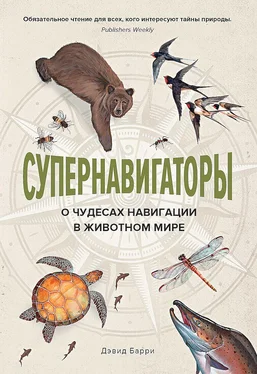
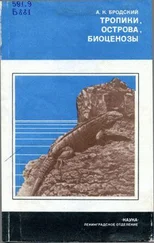
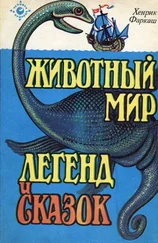
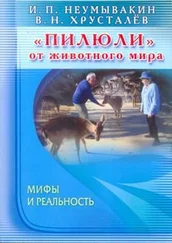



![Дэвид Барри - Супернавигаторы [О чудесах навигации в животном мире] [litres]](/books/393891/devid-barri-supernavigatory-o-chudesah-navigacii-v-thumb.webp)
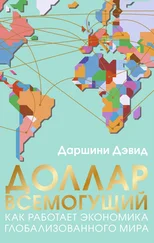
![Барри Пэйн - Новый Гулливер [Затерянные миры. Том XXIV]](/books/406917/barri-pejn-novyj-gulliver-zateryannye-miry-tom-xx-thumb.webp)


